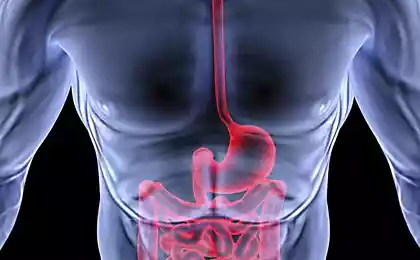734
External and internal causes of disease
Chinese doctors klassificeret climate change and the environment, and pathogenic micro-organisms and all other external factors as exogenous pathogenic causes that they are figuratively called the "six evils". These six evils, having neither ethical nor religious significance to, the following: wind, cold, heat, dampness, dryness and fire.
Of course, this is only symbols, and they are not to be taken literally.

In situations where they do not cause disease, they are called the six energies, and they can have a beneficial impact on our body.
The main harm is considered "external wind", in combination with other types of evil he is often the cause of the disease.
Its main feature — the variability. With the "wind" associated symptoms of the common cold: headache, runny nose, sore throat and cough.
"Cold" cause factors that cause infectious diseases, which are characterized by symptoms such as chills, pain in the extremities, lack of sweating and thirst, headache, fever, whitish tongue coating and weak pulse.
The reason "heat" — high temperature. The consequences of energy depletion and dehydration.
Symptoms: fever, thirst, sweating, shortness of breath, fatigue, congestion in the chest, loss of appetite, bloating and diarrhea.
"Damp" is associated with pathogenic micro-organisms in beverages and food.
Symptoms: heavy head, congestion in chest, painful limbs and joints, slight fever and diarrhea. Often requires some time for the disease to manifest.
"Dryness" is called a dry, hot environment; it often affects the skin and respiratory system. Symptoms: dry lips, dry mouth, sore throat, scanty amount of mucus, dry cough, dry skin, fever, thirst, hard stool, absence of sweating.
"Fire" is excessive "heat" that causes illnesses. The patient's response is quick and varied. Symptoms: fever, lack of fluid, bleeding, swelling, pain, rash, irritability and coma.
These types of evil energy, with the exception of "heat" can also be internal.
They arise from the dysfunction of Qi, blood, body fluids and internal organs.
Internal "wind" affects the nervous system with symptoms such as dizziness, numbness and spasms.
Internal "cold" indicates a weakening of the metabolism with symptoms such as fever, loss of appetite, clear urine, loose stools and weak pulse.
Internal "dampness" involves dysfunction of the digestive system with symptoms such as yellowish skin, scanty urination, diarrhea and swollen face.
Internal "dry" indicates a lack of fluid in the body, including the lack of blood flow with symptoms such as fever, sweating, diarrhea, thirst and dry skin.
The internal "fire" is associated with excessive functioning of internal organs. The symptoms are different depending on which internal organ is involved, but the most usual symptoms — thirst, facial flushing, sensation of heat and poor sleep. published
P. S. And remember, just changing your mind — together we change the world! ©
Source: webmedchina.ru/teoreticheskie-osnovy/prichiny-zabolevanij/vneshnie-i-vnutrennie-prichiny-boleznej.html
Of course, this is only symbols, and they are not to be taken literally.

In situations where they do not cause disease, they are called the six energies, and they can have a beneficial impact on our body.
The main harm is considered "external wind", in combination with other types of evil he is often the cause of the disease.
Its main feature — the variability. With the "wind" associated symptoms of the common cold: headache, runny nose, sore throat and cough.
"Cold" cause factors that cause infectious diseases, which are characterized by symptoms such as chills, pain in the extremities, lack of sweating and thirst, headache, fever, whitish tongue coating and weak pulse.
The reason "heat" — high temperature. The consequences of energy depletion and dehydration.
Symptoms: fever, thirst, sweating, shortness of breath, fatigue, congestion in the chest, loss of appetite, bloating and diarrhea.
"Damp" is associated with pathogenic micro-organisms in beverages and food.
Symptoms: heavy head, congestion in chest, painful limbs and joints, slight fever and diarrhea. Often requires some time for the disease to manifest.
"Dryness" is called a dry, hot environment; it often affects the skin and respiratory system. Symptoms: dry lips, dry mouth, sore throat, scanty amount of mucus, dry cough, dry skin, fever, thirst, hard stool, absence of sweating.
"Fire" is excessive "heat" that causes illnesses. The patient's response is quick and varied. Symptoms: fever, lack of fluid, bleeding, swelling, pain, rash, irritability and coma.
These types of evil energy, with the exception of "heat" can also be internal.
They arise from the dysfunction of Qi, blood, body fluids and internal organs.
Internal "wind" affects the nervous system with symptoms such as dizziness, numbness and spasms.
Internal "cold" indicates a weakening of the metabolism with symptoms such as fever, loss of appetite, clear urine, loose stools and weak pulse.
Internal "dampness" involves dysfunction of the digestive system with symptoms such as yellowish skin, scanty urination, diarrhea and swollen face.
Internal "dry" indicates a lack of fluid in the body, including the lack of blood flow with symptoms such as fever, sweating, diarrhea, thirst and dry skin.
The internal "fire" is associated with excessive functioning of internal organs. The symptoms are different depending on which internal organ is involved, but the most usual symptoms — thirst, facial flushing, sensation of heat and poor sleep. published
P. S. And remember, just changing your mind — together we change the world! ©
Source: webmedchina.ru/teoreticheskie-osnovy/prichiny-zabolevanij/vneshnie-i-vnutrennie-prichiny-boleznej.html
























